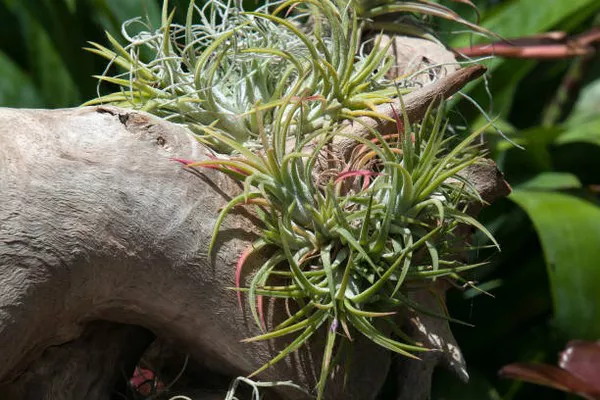Air plants, scientifically known as Tillandsia, have captured the hearts of plant enthusiasts worldwide with their unique charm and minimal care requirements. These fascinating epiphytes, which originate from the forests, deserts, and mountains of North, Central, and South America, have gained popularity due to their ability to grow without soil and their enchanting aesthetic appeal. However, a common question that plagues air plant enthusiasts is, “How long do air plants last?” In this article, we will delve into the lifespan of air plants, exploring the factors that influence their longevity and offering valuable tips to ensure their health and vibrancy.
The Nature of Air Plants
Air plants are renowned for their adaptability and resilience. Unlike most plants, they do not require soil for nourishment. Instead, air plants absorb nutrients and water through tiny trichomes on their leaves, making them truly unique in the botanical world. Their natural habitat is diverse, spanning from rainforests to deserts and high in the treetops to nestled among rocks. This adaptability is what allows air plants to survive in a variety of conditions.
The Natural Lifespan of Air Plants
To understand how long air plants last, it’s essential to recognize that their lifespan depends on various factors, both natural and environmental. In their native habitats, air plants typically have a lifespan that ranges from several years to several decades. However, when cultivated as houseplants, their longevity can vary significantly due to differences in care and environmental conditions.
In the wild, air plants grow in diverse ecosystems, from rainforests to arid deserts. These resilient plants adapt to their surroundings and can endure harsh conditions. Some air plant species, such as Tillandsia usneoides (Spanish moss), have been known to live for over a century when left undisturbed in their natural habitats. In contrast, other species may have shorter lifespans, especially when exposed to challenging environments.
Factors Influencing Air Plant Longevity
Species: The lifespan of air plants can vary based on the specific species. Some species are more robust and long-lived than others. For instance, Tillandsia xerographica is known for its longevity and can thrive for several decades with proper care.
Environmental Conditions: Just like any other plant, air plants’ longevity is significantly influenced by their growing environment. Factors such as humidity, temperature, and light levels play a pivotal role in determining how long they will last.
Light: Air plants thrive in bright, indirect light. While they can tolerate some direct sunlight, prolonged exposure can cause damage and reduce their lifespan. Ensuring they receive the right amount of light is crucial for their health.
Water: Overwatering or underwatering can both harm air plants. These plants rely on humidity and occasional misting or soaking to absorb water and nutrients through their trichomes, specialized structures on their leaves. Proper watering practices are essential for their longevity.
Air Circulation: Good air circulation is vital for air plants to prevent fungal growth and rot. Stagnant air can lead to problems that can shorten their lifespan.
Nutrition: Although air plants don’t require soil, they still need nutrients. You can provide these nutrients by misting them with a diluted fertilizer solution once a month during their growing season.
Pests and Diseases: Like all plants, air plants are susceptible to pests and diseases. Regular inspections and prompt treatment can help extend their lifespan.
Handling: Excessive handling or moving of air plants can cause damage to their delicate leaves and trichomes, potentially reducing their lifespan.
How to Extend the Lifespan of Air Plants
Now that we understand the factors that influence the longevity of air plants, let’s explore some tips to help extend their lifespan when cultivated as houseplants:
Provide Adequate Light: Place your air plants in a location with bright, indirect light. A south or east-facing window is often ideal. Avoid exposing them to harsh, direct sunlight.
Proper Watering: Mist your air plants 1-2 times a week or soak them in water for 30 minutes every 2-3 weeks. Ensure they dry completely within 4 hours after watering to prevent rot.
Humidity: Air plants thrive in humid environments. If you live in a dry climate, consider using a humidity tray or a room humidifier to create the right conditions for them.
Air Circulation: Place air plants in areas with good air circulation to prevent moisture buildup and fungal issues.
Fertilization: Use a diluted, balanced fertilizer (such as 20-20-20) to feed your air plants once a month during the growing season (typically spring and summer).
Pest and Disease Management: Regularly inspect your air plants for pests like mealybugs or aphids. If you notice any issues, treat them promptly with neem oil or a gentle insecticidal soap.
Avoid Excessive Handling: Handle your air plants gently and only when necessary. Excessive touching can damage their trichomes and reduce their lifespan.
Protect from Extreme Temperatures: Keep air plants away from extreme temperatures, as they are sensitive to both cold and heat. Aim to maintain a consistent temperature range between 50°F (10°C) and 90°F (32°C).
Conclusion
Air plants are remarkable creations of nature, capable of enduring diverse conditions and gracing our homes with their unique beauty. While their natural lifespan varies based on species and habitat, proper care and attention can extend their life significantly when cultivated as houseplants. By understanding the factors that influence air plant longevity and following the recommended care guidelines, plant enthusiasts can enjoy the company of these captivating plants for many years. So, to answer the question, “How long do air plants last?” — with the right care, they can thrive and bring joy for a long time to come.


